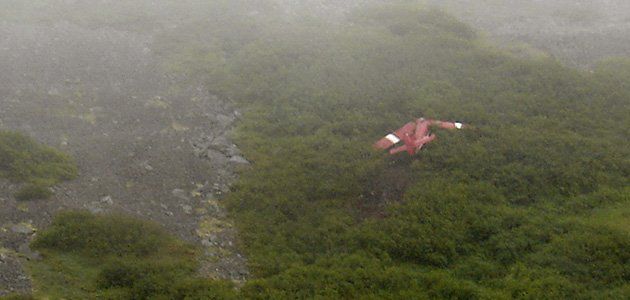NTSB Warned About Alaska Pilots' Risky Ways—and Ted Stevens Argued (original) (raw)

An image provided by the Alaska State Troopers shows the wreckage of the amphibious plane carrying former senator Ted Stevens that crashed into a remote mountainside. An image provided by the Alaska State Troopers shows the wreckage of the amphibious plane carrying former senator Ted Stevens that crashed into a remote mountainside. Alaska State Troopers-AP
The National Transportation Safety Board warned 15 years ago that Alaska suffers too many air accidents from flying under conditions like those in which a De Havilland floatplane crashed on Monday, killing former Alaska senator Ted Stevens and four other passengers. The 1995 report found that a significant share of Alaska's aviation accidents, most involving small planes, have resulted when pilots using only visual navigation encountered weather that normally would be considered unsafe for flying without instruments. "All aviation operations in Alaska have experienced a greater rate of accidents involving VFR [visual flight rules] into IMC [instrument meteorological conditions] compared to other parts of the country," the NTSB stated. The report also cited an earlier NTSB study of Alaskan air-taxi safety, published in 1980, describing a persistent problem commonly known in the industry as the "bush syndrome": a "mindset of risk-acceptance and a willingness to take risks."
As we reported yesterday, Sen. Stevens (who was badly injured in the 1978 Anchorage airport crash that killed his first wife) was known among air-safety regulators for being "very protective" of his state's aviators. Peter Goelz, who served as NTSB's managing director during much of the 1990s, told Declassified that Stevens repeatedly argued that because of his state's economic dependence on air transportation and its "unique" weather and terrain, regulators ought to make exceptions for aviation in Alaska.
According to two aviation-safety sources, who asked for anonymity when discussing an accident investigation that's barely begun, the pilot of the single-engine DHC-3 Otter was flying under "visual flight rules"—navigating only by what he could see from the cockpit—when the plane struck a mountainside in southwestern Alaska. Weather in the area included mist and light rain, which may have kept the pilot from being sure of his surroundings while flying low among the mountains, as pilots of small aircraft routinely do when making runs between remote Alaska airstrips. Even mildly bad weather could make things difficult, particularly in intricate mountain terrain, so pilots fly lower and lower to get away from the mist.
Officially, the NTSB's investigation has only just begun. As of Wednesday morning, officials in Washington weren't even sure whether NTSB investigators had yet reached the remote crash site about 20 miles north-northeast of the town of Dillingham, according to an official familiar with the inquiry. Unofficially, two aviation safety sources said there was no question that the pilot had not filed a flight plan, was not in regular contact with Air Traffic Control, and was flying under visual flight rules. All of these procedures are entirely normal for many if not most flights by small private planes in the Alaska outback. In fact, because of the state's enormous size, remoteness, and rough terrain, such procedures are also routinely followed by many commercial flights—both commuter airlines and air taxis—in Alaska's far-flung areas.
A source familiar with the investigation's early stages says the weather was so bad when the plane was reported missing that the search for the wreckage and survivors was significantly delayed. Still, the source adds, investigators will have to determine what the weather was like at the time the plane went down.
As seen from previously unpublished statistics made available to Declassified by the NTSB, summer is historically the most dangerous season for aviation in Alaska—and August is the single most dangerous month. Between 2000 and 2010, August had a total of 167 air accidents, 18 of them fatal. June had 130 accidents (15 fatal) over the same decade, with 129 in July (15 fatal) and 150 in September (9 fatal). By comparison, the number of accidents in winter was strikingly modest, with only 16 in January (2 fatal) and 26 in December (4 fatal). As the figures suggest, Alaska's air traffic tends to be heaviest when temperatures are warm and days are long.